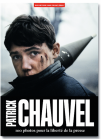After several administrations that sought to improve press freedom, the 2023 parliamentary elections brought Prime Minister Robert Fico back to power, signaling the end of efforts in this area. The instigator of Jan Kuciak’s murder in 2018 has yet to be convicted. Journalists work in a hostile environment and both public and privately owned media remain vulnerable to interests unrelated to journalism.
Media landscape
The most influential privately owned media outlet, TV Markíza, is being subjected to political pressure. Public broadcaster RTVS has maintained strong ratings despite having been underfunded for years and vulnerable to political influence. After acquiring the Novy cas newspaper, the oligarchic Penta group now owns Slovakia’s two biggest tabloid newspapers. The country has a strong tradition of investigative journalism, practiced by several newspapers and online media outlets.
Political context
After several administrations that sought to improve press freedom, the 2023 parliamentary elections brought Prime Minister Robert Fico back to power. It was during his mandate that journalist Jan Kuciak was murdered. The new ruling coalition’s representatives attack critical media and refuse to answer their questions. In early 2024, Fico and his allies openly demanded the departure of the director of public broadcaster RTVS before the end of his term and threatened, to this end, to reorganize RTVS after slashing its funding by 30%.
Legal framework
Press freedom benefits from a favourable legal framework in terms of the confidentiality of journalistic sources, access to state-held information and transparency of media ownership and funding. But defamation is still punishable by imprisonment.
Economic context
Various factors undermine the mainstream media’s editorial independence. A small group of oligarchs owns several major outlets while the public broadcaster RTVS’s funding remains vulnerable to political influence. A number of smaller privately owned media outlets are growing thanks to the support of their audience and the digital subscription model. Nonetheless, the limited size of this market and the rise of digital platforms hamper the funding of quality news reporting.
Sociocultural context
While Slovak society is largely conservative, the media are, for the most part, liberal-leaning, which causes tension. Journalists, especially women, are criticised and sometimes attacked online for covering gender-related issues or sexual harassment. Encouraged by the verbal attacks of some politicians, members of the public have insulted or harassed journalists during protests and on social media.
Safety
The murder of investigative reporter Jan Kuciak and his fiancée Martina Kusnirova in 2018 was a tragic turning point. Although two of the perpetrators and two intermediaries have been convicted, the alleged instigator, businessman Marian Kocner, was acquitted twice. Cooperation between journalists and the police is developing. Two new press freedom platforms were launched with RSF’s support in 2023, one by civil society and the other by the state, but their impact remains to be seen in the new political context.



